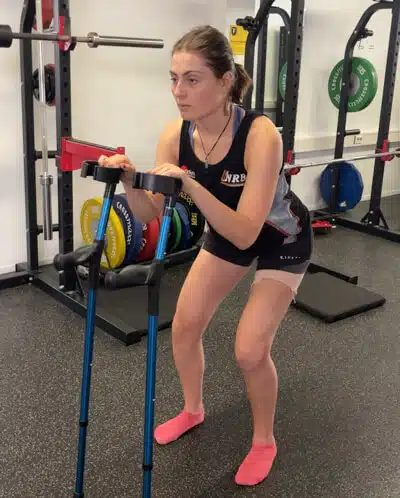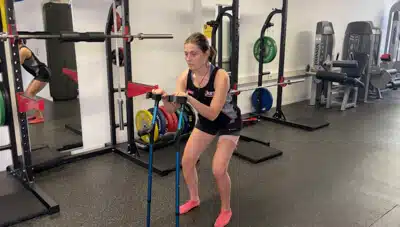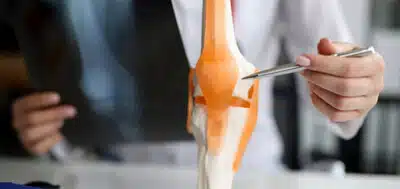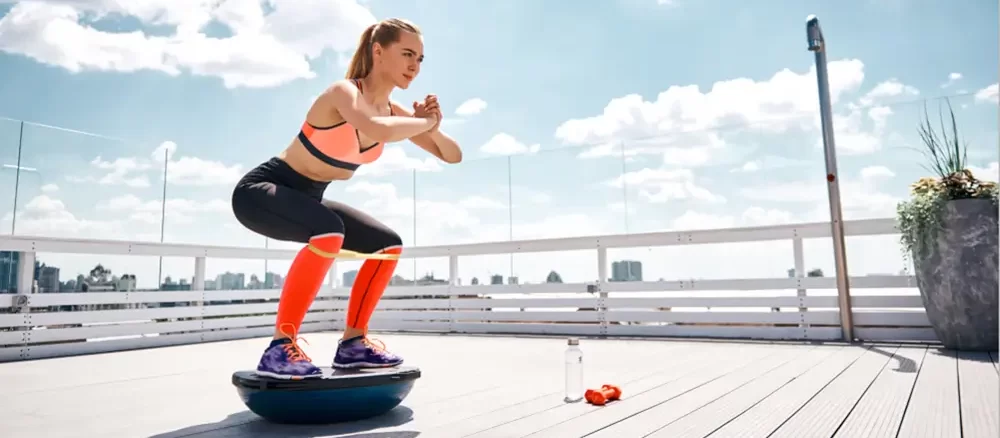
Top 5 risks for failure of anterior cruciate ligament reconstruction

Written by Michael de Levie
A new anterior cruciate ligament is strong. How strong it is depends on several factors such as the type and thickness of the graft. The fact is that the new anterior cruciate ligament is stronger than the original anterior cruciate ligament. Due to various causes, a new anterior cruciate ligament can tear again. Although most rehabilitations after anterior cruciate ligament reconstruction are successful, there are still risks. If you're curious, in this blog you can read the top 5 risks why anterior cruciate ligament reconstruction can fail.
Why does anterior cruciate ligament reconstruction fail?
What does the term "failure" mean in anterior cruciate ligament surgery?
Failure of anterior cruciate ligament reconstruction means that the anterior cruciate ligament does not do what it should, or even tears again. This failure can occur at any time during rehabilitation or when resuming sports.
The 5 risks for anterior cruciate ligament failure are:
- Tunnel placement.
- Type of grafts.
- Unrecognized collateral ligament injury.
- Inadequate physical therapy.
- Impaired healing process.


Placement of tunnels:
A tunnel is drilled through the lower leg (tibia) and upper leg bone (femur). The new cruciate ligament is fixed in these tunnels. Ask 10 orthopedic surgeons what the optimal tunnel placement is and you will get 10 different answers. After all, the exact placement of the tunnels comes down to millimeters of accuracy. It happens that the tunnel is placed just in the wrong place. For example, a tunnel that is too steep may provide good forward and backward stability, but the essential rotational stability is not provided. The result is a functionally unstable knee.
Another consequence is a knee that cannot stretch properly due to improper tunnel placement or an anterior cruciate ligament that is too tight. This limits your ability to walk, stand and exercise normally.
At 6 weeks after surgery, the orthopedic surgeon will check to see if you can stretch the knee properly. If you still have about 10 degrees of extension limitation at that time, the doctor will want to see you again after 6 weeks. If stretching restriction persists, an MRI scan will be done to determine the cause. In addition to tunnel placement, there are other causes for stretch restriction (you'll read more about these later in this blog). If the tunnel is not placed properly, then a choice may be made to replace the new cruciate ligament again.
Fortunately, these days the surgical techniques are very good and specialized orthopedic surgeons are well practiced. The chances of wrong tunnel placement are very low.

Type graft
There are several types of grafts that can be used for a new cruciate ligament, these are: hamstring, quadriceps, patella or donor tendon. The differences between these grafts are very small.
Good series have been described with the patella tendon. The advantage of this tendon is the bone plugs that are fixed in the bone. After 6 weeks, this tendon is fixed. Because of this, the innervation may also be better of this tendon. Therefore, in top sports and top amateur sports, this tendon is preferred.
The hamstring tendon is used without bone plugs and must grow into the tunnels of the bone. The hamstring technique is technically easier to perform and, due to smaller scars, cosmetically more attractive than the patellar tendon. The literature shows that there are relatively slightly more revisions for hamstring tendons.
About the quadricepstendon not enough series have been published at this time to compare them with the other grafts, but the outlook is good. Partly because the hamstring remains intact and this has an important function on protecting the knee.
The donor tendon has relatively the highest failure rate and donor material is scarce. As a result, this technique is almost not performed.
Additional injuries not recognized
A knee injury in which the anterior cruciate ligament tears usually involves other structures as well. The most obvious structures are the inner ligament (Medial Collateral Ligament (MCL)), outer ligament (Lateral Collateral Ligament (LCL)), menisci and knee capsule. Some of these structures have good repair capabilities. However, it can happen that an MCL or LCL is damaged to such an extent that spontaneous healing is no longer possible. You can assess this with a physical examination. Here you pay attention to the degree of cavity of the affected knee compared to the unaffected knee. A side note: some cavity of the knee can't hurt, but where is the cutoff point. Assessing the knee is a subtle act and should be done by an experienced orthopedic surgeon.

In the blog about anterolateral corner instability you were able to read about the different knee angles. Capsular, ligament and muscle injuries at the posterolateral and medial angles are not common and, as a result, are still sometimes missed. For both the MCL, LCL and lesions at the angles, if they are not properly assessed, rehabilitation is laborious, or the knee remains unstable and sports resumption is unsuccessful. There is even an increased risk of knee osteoarthritis and/or increased risk for new knee injury.
Inadequate physical therapy
It is a tricky concept, but here you can think of the following points (cf: find a knee specialist)
- Failure to recognize an anterior cruciate ligament injury;
- Wrong structure of rehabilitation;
- Inadequate monitoring of progression;
- No clear criteria for rehabilitation;
- Practice space not suitable;
- No field or outdoor training;
Good physical therapy is essential and determines to a very large extent the outcome of rehabilitation. It starts with recognizing the injury, but certainly with being able to provide the right facilities and training environment. A physical therapist who regularly does anterior cruciate ligament rehab will recognize the good and bad signs of rehabilitation and the knee. In addition, it is nice to train in an environment with peers. You can learn from each other and share experiences. Another important point is where physical therapy can fall short is the inadequate build-up, monitoring and evaluation of rehabilitation. Anterior cruciate ligament rehabilitation should be built according to certain criteria and assessed with measurements and tests
Impaired healing process.
After anterior cruciate ligament surgery, the knee must recover. Usually this goes well, but unfortunately not always.
Infection
There is a chance of infection of the knee, usually in the first weeks after surgery. You can recognize an infection by a worsening condition of the knee, swelling increases, the knee turns red, may start to glow, stretching and bending become difficult and you may develop a fever. If you suspect you are going through an infection, always contact the hospital immediately. Blood tests show the level of inflammation. The knee is almost always flushed with keyhole surgery. This procedure of blood tests and flushing the knee may be repeated. A course of antibiotics is started.
Cyclops lesion
In wrong tunnel placement, you were able to read about what can be reasons for a stretch restriction. Another reason for a stretch restriction is a cyclops lesion. A cyclops lesion is an abnormality of healing that causes too much scar tissue to be produced at the front of the cruciate ligament. Sometimes stretching is minimally limited, but in a few cases stretching is not possible properly. After 3 months, but more often after 5 or 6 months, this is examined with an MRI scan. If there is a cyclops lesion, keyhole surgery may be considered to remove it. After this, rehabilitation is usually successful again.
Persistent swelling
Another reason may be persistent swelling with no apparent cause. The knee remains swollen to a greater or lesser degree. Usually the swelling gradually decreases over months.
Overall stiffness
General stiffness of the knee with no apparent cause. The knee is stiff with stretching and bending and the kneecap also feels stiff with movement. It is important to recognize this before physical therapy and treat the knee. Treat the joint first! If the knee is doing what it should be doing, then it is usually possible to train and build muscle strength without problems.
Summary
An anterior cruciate ligament reconstruction cannot be compared to buying a new car. Everything works perfectly and only needs to be driven in. In surgery, you depend on the healthcare professionals and your body's biology. Everyone heals differently and handles rehabilitation in their own way. Because of this, there are reasons why an anterior cruciate ligament reconstruction fails. Fortunately, you've also been able to read that it usually goes well.
Podcast: in the podcast "why an anterior cruciate ligament reconstruction can fail" orthopedic surgeon Reinoud Brouwer and sports physical therapist Leon Meijer talk about their experiences.





Trackbacks/Pingbacks